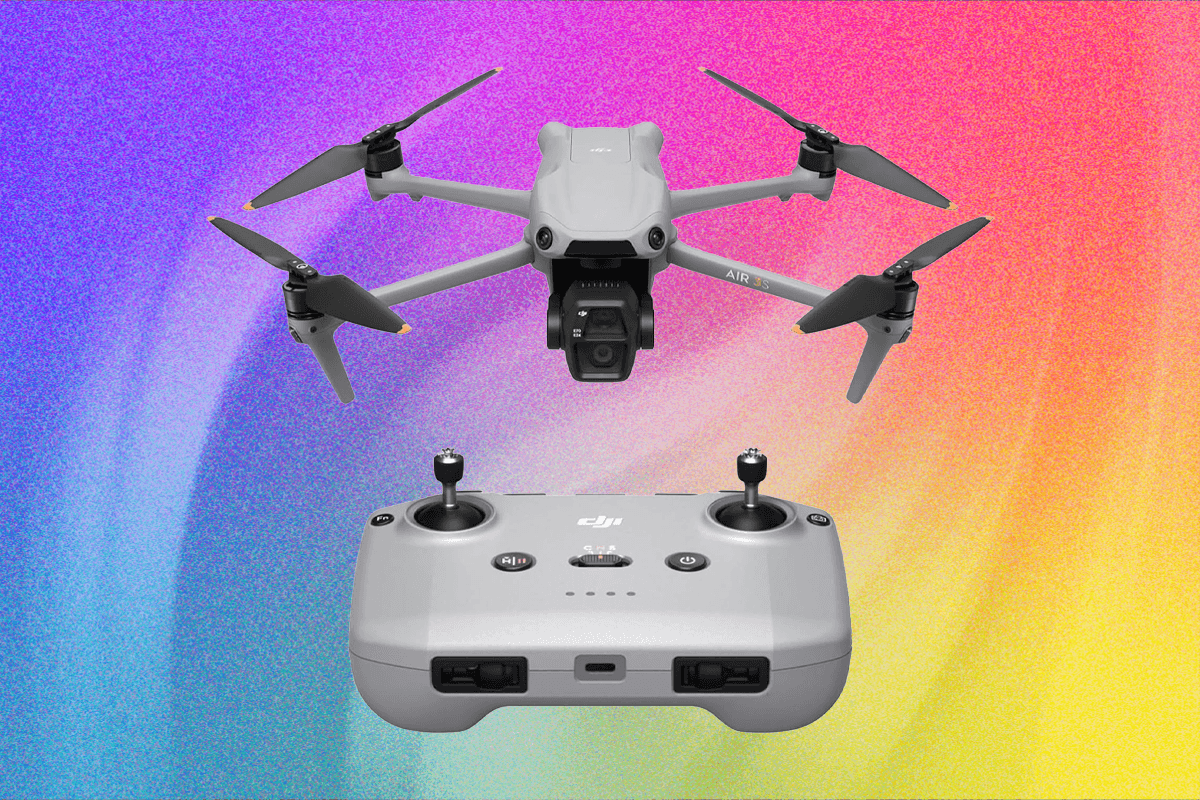All products featured on WIRED are independently selected by our editors. However, we may receive compensation from retailers and/or from purchases of products through these links.
It’s no exaggeration to say that the best drones have changed the way we view the world. They’ve taken once-difficult and expensive moviemaking techniques and made them accessible to anyone. Videos that previously required a camera crew, expensive cranes, and hours of filming can now be done in minutes with the tap of a single Auto Takeoff button.
Drones aren’t just flying cameras, though; they’re also the modern version of remote-controlled vehicles. Again, they’ve made flying easier and more accessible, thanks to intelligent collision sensors that protect your investment from mishaps. There is a dizzying array of drones available, but there is a basic division to be aware of—cheaper drones, while fun, will never fly as well or deliver the kind of video and photo results possible with more expensive models. You get what you pay for. That said, if you’re not worried about wowing YouTube with your sweeping panoramic masterpiece, you don’t have to spend a fortune to get a good, fun drone. Here are the best drones I’ve tested for every budget.
Be sure to check out our many other buying guides, including the Best Action Cameras, Best Compact Cameras, and Best Mirrorless Cameras.
Updated June 2025: We’ve added the DJI Air 3S, Avata 2, Mavic 4 Pro, HoverAir X1 ProMax, and added helpful information.
Above a certain size and weight, drones are subject to some fairly strict laws regarding how and where they can be flown. You may need to register your drone, apply for a permit, pass an exam or label your drone with personal details before getting it airborne. These laws differ depending on which country you’re in. Make sure to check local regulations carefully before flying. For the US, UK, and EU, more details can be found here: US FAA, UK CAA and EU EASA.
In general, laws get more restrictive the heavier the drone, and sub-250-gram (8.8-ounce) drones tend to fall into a largely unrestricted category with relatively few legal hoops for pilots to negotiate. That’s why so many manufacturers offer lightweight drones.
To get the most out of a drone, it might pay to invest in a few optional accessories.
Batteries: The first thing I’d probably buy is spare batteries, as drone battery life tends to be fairly short, and having extras in your pocket greatly extends flying time. For a less immediate solution, you could buy a high-capacity power bank to recharge your drone’s battery while you’re out and about.
ND filters: If you’re filming in bright sunlight and want greater control over shutter speed (which can help achieve pleasing effects like motion blur), neutral density filters are an essential camera add-on. These are generally made to fit specific models of drone.
Carrying case: While drones are often hardier than they look, a dedicated carrying bag or case keeps your expensive investment well protected, while often leaving space for extras like controllers, cables, batteries, memory cards, and spare propellers. The bags that DJI bundles with its drones in its Fly More Combo packages are excellent quality, but any camera bag with customizable interior pockets would work well too.
-
Best for Most People
Despite sitting slap bang in the middle of DJI’s drone line-up, wedged between the premium Mavic and ultralight Mini ranges, the DJI Air 3S (9/10, WIRED Recommends) is anything but average. With a smaller and more lightweight build than its Mavic cousins, the Air 3S offers fantastic portability. Crucially, though, it still manages to deliver heavyweight battery life (up to 45 minutes of flight on a full charge) and camera performance.
The gimbal-mounted dual camera setup features a wide-angle camera with a 50-MP 1-inch sensor and a medium telephoto camera with a 48-MP 1/1.3-inch sensor. Both can shoot 10-bit 4K video at 60 frames per second (fps) (or 120 fps for slow-motion playback), with the larger wide-angle sensor also offering an impressive 14 stops of dynamic range and highly impressive low-light capabilities.
It’s reassuringly simple and safe to fly, too, with a full suite of omnidirectional obstacle sensors helping to prevent collisions and forward-facing lidar to prevent aerial mishaps, even when flying in the dark. The only note of caution I would sound when it comes to the Air 3S is that its weight (724 grams) puts it into an aircraft category that requires more paperwork and flight restrictions than an ultralight drone like the DJI Mini 4 Pro.
-
Best FPV Drone
By beaming an ultra-low latency live feed from its camera directly into a pair of goggles, a first-person view (FPV) drone puts you right in the cockpit of a small and agile aircraft able to squeak through the smallest of gaps and pull off breath-taking moves like flips, barrel rolls, loops and vertical plunges. These aren’t drones you buy to get pristine photos of wide open vistas so much as to experience (and document) an adrenaline-inducing rollercoaster ride through a tight, obstacle-populated environment.
As such, piloting an FPV drone is a completely different, entirely more challenging kettle of fish than piloting a standard camera drone. Not only do you lose the anti-crash guard rails used by many drones, but you’re flying at greater speed, with less time to react. The DJI Avata 2 (8/10, WIRED Recommends) brings down the skill requirements to a more beginner-friendly level, all while capturing video at 4K/60 fps or 2.7K/120 fps. While it doesn’t have automatic obstacle avoidance, the Avata 2’s motion-sensitive controller and ability to quickly brake and hover in mid-air make it a lot more forgiving than the full manual twin-stick controls used by most FPV drones.
The Avata 2’s goggles are also fantastic, pairing with the drone and delivering a crystal-clear image through its pair of micro OLED screens. They’re even comfortable for those with poor eyesight, like myself, thanks to eyepieces that can be adjusted for inter-pupillary distance and a diopter for correcting vision.
I’d liken flying the Avata 2 to riding a bike with the training wheels on, because there are certain moves you can’t pull off with the motion controller, such as steep dives, where the motors cut out completely and the drone drops like a stone. If you want to perform these riskier stunts, the gamepad-style DJI Remote Controller 3 is available as an optional add-on.



